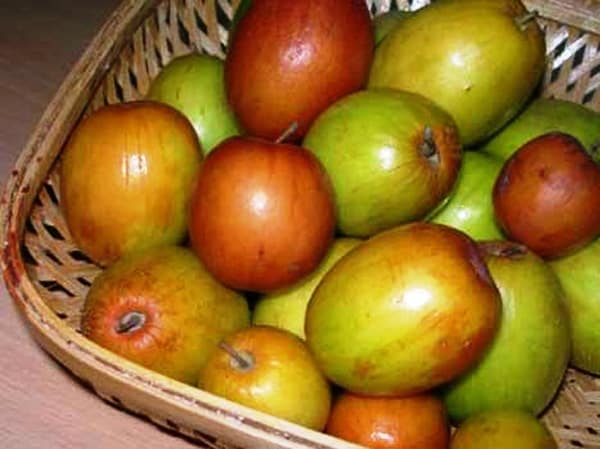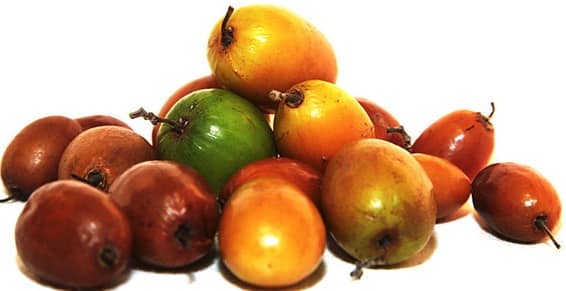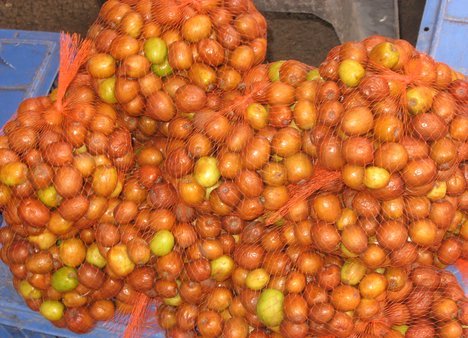Ber Fruit Cultivation Guide:

Introduction of Ber Fruit:- Ber which is also known as “Indian jujube” is one of the hardy minor fruit crops and suitable for cultivation in arid conditions. This fruit is native to India and is called poor man fruit in India. Ber fruit has an excellent health benefits. The commercial cultivation of Ber fruit is growing day by day due to its demand, easiness of cultivation and less maintenance. This fruit belongs to the family of “Rhamnaceae” and genus of “Ziziphus”. Commercial plantations of budded Ber trees have now cultivated throughout India, and farmers are getting good profits as well.
Health Benefits of Ber Fruit:- The following are the uses and health benefits of Ber Fruit.
- Ber fruit helps in cancer treatment.
- Ber fruit has antioxidant properties.
- Ber fruit helps in relieving stress.
- Ber fruit helps in blood purification.
- Ber fruit helps in strengthening bones.
- Ber fruit helps in treating insomnia and anxiety.
- Ber fruit helps in protecting the liver.
- Ber fruit helps in improving the immune function.
- Ber fruit helps in weight control.
- Ber fruit helps in streamlining blood circulation.
- Ber fruits are rich in vitamin C, A & B complex.

Major Production States of Ber Fruit:- The major Ber fruit growing states in India are Haryana, Punjab, Maharashtra, Uttar Pradesh, Gujarat, Rajasthan, Madhya Pradesh, Bihar, Andhra Pradesh, Telangana and Tamil Nadu.
Common and Local Names of Ber Fruit:- Baer, Ber (Hindi), Kul (Bengali) ilanthappazham, badari (Malayalam), Ilanthai, Elantha Pazham (Tamil), Yelchi Hannu (Kannada), Regi pandu (Telugu), Bor (Konkani and Marathi).
Climate Requirement for Ber Fruit Cultivation:- This fruit is a hardy fruit and grows well under any climatic conditions and up to an elevation of 1100 meters above mean sea level (m.s.l). For best production, this fruit crop requires hot and dry climatic conditions. The Ber fruit crop tolerates high temperature and aridity by cessation of growth, leaf fall and dormancy stage.
Soil Requirement for Ber Fruit Cultivation:- The Ber tree grows on a wide range of soils ranging from shallow to deep and from gravelly and sandy to clay. This tree is very hardy any thrives well in poor soils as well. It also tolerates alkalinity and slightly waterlogged conditions.
Varieties of Ber Fruit:- There are many varieties of Ber fruit are cultivated throughout India. Some of the most popular commercial varieties are Umran, Karaka, Sanaur – 2, Gola, Chhuhara, Ilaichi, Mehrun and Seb. Among all the varieties, Umran is the best one in terms of quality.
Propagation in Ber Fruit Cultivation: – The Ber tree is propagated by seeds during earlier days. The main disadvantage of this method is of heterozygosity & variability in seedling progeny. The most commercial propagation method is by patch budding. For raising a budded plantation, sowing the Ber fruit seeds in the main field itself is a preferred at appropriate spacing. Break the hard seed coat for quick germination.
Land Preparation, Planting in Ber Fruit Cultivation:- Land should be prepared by ploughing, harrowing, fine leveling and removing any weeds. The best season for Ber plantation is monsoon ( July to August). The Ideal spacing of 6 meter x 6 meter ensures the good plant growth.
Dig the pits of 60 cm x 60 cm x 60 cm and to prevent the termites, about 100 grams of 10 % carbaryl or aldrex dust should be sprinkled on the bottom of pits.
Pits should be filled with top soil mixed with 20 kg of farm yard manure (FMY) and 1 kg of super phosphate. At the onset of monsoon, bud grafts or treated seeds should be planted in these pits.
Weed Control in Ber Fruit Cultivation:- Make sure to clean the area around young Ber plants by weeding and hoeing. After irrigating the plants or rainy season, stirring the soil under the tree canopy will provide the better aeration around roots and helps in weed control.
Irrigation in Ber Fruit Cultivation:- Generally, Ber trees are cultivated under rainfed conditions. However, in case of irrigated crop, watering should be done based on soil moisture condition and weather condition. In hot long dry season, irrigate the field twice a month.
Intercropping in Ber Fruit Cultivation:– Farmers can utilize the inter spaces in the Ber plantation for getting extra revenue. Under irrigated conditions, any vegetable crops can be grown as intercrops until the Ber trees are fully grown (3 to 4 years). Under rain fed conditions, legume crops like Moong (Mung bean), Cowpea and Horse gram can be grown.
Training in Ber Fruit Cultivation:- Ber plants should be trained to develop a strong framework during the initial 2 to 3 years after planting. support with bamboo stick and vertical growth is encouraged once the plant height is about 1 to1.5 meter, the terminal growth Is pinched, allowing lower buds on main stem to sprout.
Pruning and Training in Ber Fruit Cultivation:- In Ber plantation, pruning is an essential task and to induce the maximum number of new shoots, pruning should be carried out every year. The best pruning season is from mid of the April to mid of May.
Mulching in Ber Fruit Cultivation:- Mulching should be done to conserve the soil moisture and to control the weed growth. Black polythene mulch can be used as part of this task.
Manures and Fertilizers in Ber Fruit Cultivation:- In case of fully grown Ber tress, application of 25 to 30 kg farm yard manure (FMY), 250 grams of nitrogen (apply in 2 split doses), 250 grams of P2O5 and 50 grams of K2O per each Ber tree is recommended for better yield and quality.
Pests and Diseases in Ber Fruit Cultivation:- The main pests found in Ber plantation are , leaf-eating caterpillars, fruit fly, fruit borer, mealy bug, scale insect and thrips. To control these pests, select the healthy plants or seeds and perform regular intercultural operations in the field apart from applying pesticides. Leaf spot, powdery mildew, rust and black spot are the common diseases found in Ber cultivation. To control these diseases, apply Kavach Rovral/Mancozole (2 grams./ liter)/ wettable sulphur.
Harvesting in Ber Fruit Cultivation:- Usually, Ber tree will be ready for harvesting 5 months to 6 months after flowering. To get early fruits, spray 750 ppm. 2-chloro-ethyl phosphoric acid. The time of harvesting depends on the region in India, October to November in south India, December to March in Gujarat, January to March in Rajasthan and February to April in north India. Under rainfed conditions, fruit bearing starts from second year where as budded plants will be ready for bearing after 3 to 4 years.
Yield in Ber Fruit Cultivation:- The fruit yield depends on the farm management practices, variety and climatic conditions. The average yield of 100 to 200 kg per tree can be expected during prime bearing stage (10 to 20 years). In rain-fed conditions an average yield of 60 to 90 kg can be obtained. Ber tree is productive for 25 to 30 years.
Post Harvesting Tasks in Ber Fruit Farming:- After harvesting the fruits, grading should be done based on the size. Discard the damaged or over-ripe fruits. Pre cooling fruits after harvesting will increase the shelf life and these fruits can be packed in gunny bags and marketed to local areas.

Bottom Line:- Ber fruit cultivation is very profitable with low investment and low maintenance.
For sheep or goat farming information : Read here.
Thanks for this informations. It motivates the new comers in the farming field.
You welcome! Please share this blog in your friends circles and help the farmers indirectly.
Sir where to get ber seeds?
Dear Sir I am from Mumbai Maharashtra and hv a 10000 sq.ft agriculture land Total land is 3 acres and in that mango trees are there .I want to take crop of Apple Ber..can you give me proper guidelines..
please, give me information about apple ber ( thai apple ber).